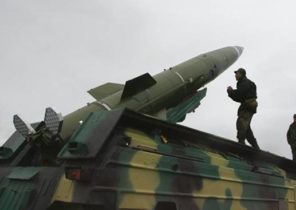
In Latin America a growing sense of anxiety in connection with the arrival of Donald trump in the White house. First and foremost, the Latin American countries concerned about how the new President will build trade and financial relations with the United States.
Currently the region is experiencing the first signs of economic recovery. Pre-election statements of trump in the economic sphere, in particular, the plans for the new US President to tighten immigration rules, the construction of the wall on the border with Mexico, tariffs on Mexican goods, and the migration of American car factories from Mexico to the United States led to the depreciation of the national currencies of several Latin American countries.
As expected, this year Latin America should come out of the recession, which lasted for the past two years. The exception was Venezuela, which continues to be immersed in a deep political and economic crisis.
Brazil in 2016, managed to overcome the further decline of economic growth, and now seeing the first signs of the country’s exit from recession. Argentina continues to struggle with high inflation and budget deficit. Ecuador suffered greatly due to the fall in revenues from the sale of oil and the dollarization of the economy. This once again proves the necessity of abandoning the dollar and switching to national currency, as in other countries of the region.
In Chile, Colombia and Uruguay still has little economic growth. The highest economic growth was recorded in Peru, but he was still far from the indicators that were observed in years of high prices for raw materials.
The only countries that have managed to overcome the negative trends of the economic slowdown in South America (Bolivia, Paraguay) and the countries of Central America and the Dominican Republic.
Positive news is the anticipation of increase in demand for export products from Latin America. This is due to economic growth in the United States, positive dynamics of economic growth in the European Union, as well as expectations that the pace of China’s economic growth in 2017 can be 6.5%.
It should be noted that prices for basic raw materials has reached its peak in 2016, and remittances Latin American migrants exceeded the level of 2007-2008.
However, rising prices for raw materials or the increase in remittances is not able to reverse the negative situation in the economy. If you rely on the growth dynamics of commodity prices in the past, in the future we should expect further price declines, and trump’s migration policy will lead to a sharp decline in the number of migrants from Latin America.
Latin America is experiencing an acute shortage of foreign investment. According to the Bureau of economic policy analysis of the Netherlands (CPB Netherlands Bureau), since 2007 the growth rate of world trade volume accounted for less than 2% per year. This is the lowest figure since the Second World War. For the first time it has fallen below the rate of growth of global GDP.
The slowdown in world trade is fraught with great danger for Latin America, as part of a strategy of economic recovery they need to increase production and to diversify its industrial capacity.
It should be noted that trump will adhere to protectionist trade policies that can lead to trade wars. This threat applies not only to China but also Mexico, where some American companies have reduced their investments and began to withdraw production facilities in the United States.
But the biggest blow to Latin America may cause US withdrawal from the North American free trade agreement.
Latin America must respond to new challenges and maintaining access to the international financial market. In the past, Latin American countries have received billions of dollars in foreign investment, but they declined in response to falling prices for raw materials and the slowdown of the Chinese economy. In addition, increased base interest rate of the Federal reserve system (FRS) the USA has had a negative impact on attracting foreign investment to the region.
Now, in connection with the election trump President of the United States, we should expect new shocks. There is no doubt that external financing will become more expensive. More attractive for investors will be U.S. Treasury bonds.
But the greatest danger to the world economy will occur, if the increase in the budget deficit of the United States superimposed on a restrictive monetary policy and a strong dollar.
It is this policy spawned a global financial crisis in the mid 80-ies of the last century. Things could be even much worse if trump because of the trade deficit will begin to introduce protectionist measures, as in the past, the United States did against Japan.
Trump economic policy in the near future will be crucial for Latin America. The hope is that trump will not turn my back to Latin America, and its decisions are not intended to re-plunge the region into recession.
José Antonio Ocampo is Professor at Columbia University and Chairman of the Committee of economic and social councils for development policy United Nations.







